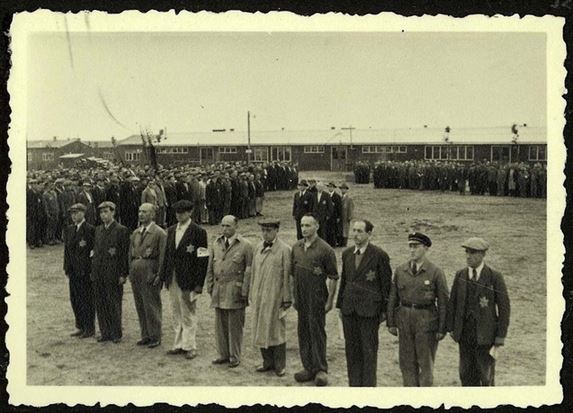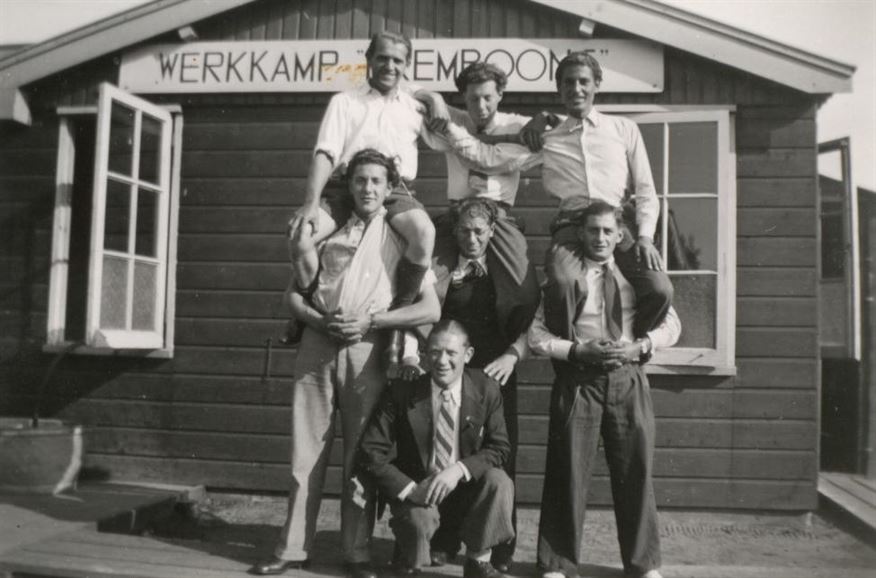Divide and conquer
After the camp was overtaken, barbed wire fences and seven watchtowers were put in place. The SS-Wachbataillon company took care of outdoor surveillance until early 1943. The Jewish Ordedienst (OD) and the Dutch military police kept things in order inside the camp, and were later put in charge of outside security as well. In the summer of 1944, they were replaced by a company of the Police Batallion Amsterdam. This police power was made up mostly out of officers trained in Schalkhaar.

In Abel J. Herzberg’s words, Westerbork was a symbol of the day of ‘the Last Judgement’. As of October 1942, the organisation of ‘this day’ was in the hands of SS-Obersturmführer Albert Konrad Gemmeker. His predecessors didn’t meet the demands the Nazis had set for the camp’s functioning. They wanted for the Jews to be deported as quickly and quietly as possible. The way the first commanders had cracked down caused a lot of resistance and unrest in the camp. Gemmeker appeared to be better suited for spotlessly executing the plans. He was honoured to make sure the Durchgangslager functioned perfectly, without friction, without incidents. Hence, one wouldn’t encounter screaming and murdering SS members in the camp. Gemmeker was generally perceived as ‘a perfect gentleman’ who treated the Jews correctly.
Camp organisation by prisoners
In the daily routine, the absolute ruler rarely had to intervene. His main concern was meeting the weekly amount of Jews to be supplied. The organisation for doing so was left up to the prisoners. When Camp Westerbork still functioned as a refugee camp, a camp organisation had already been founded by German and Austrian Jews. Many of them had already been imprisoned in concentration camps in the thirties. They knew that the circumstances in the camp were better if they tried to arrange as much as possible by themselves instead of leaving it up to the Nazis. Schlesinger functioned at the ruler within the camp. He was the first Dienstleiter, because he was in charge of the most important Dienst: administration, where lists for transportation were put together.
For as long as the Jewish camp staff adhered to the number of to-be-deported people that Gemmeker had passed on, their power over fellow prisoners was considerable. Because of this and the sometimes ‘extravagant and distasteful lifestyle’ the leaders were not popular and mostly hated. They were able to protect others. There was a high degree of distance between those who occupied a function and the mass. People felt this and behaved accordingly: ‘camp aristocracy’ versus ‘transport material’.
Essential peace keepers
For internal organisation and security, the Jewish Ordedienst was founded. Dressed in (green_ overalls, the OD members were essential peace keepers in the camp, for which mostly former military and youth were eligible. The German leadership was constantly supported by OD members, which made them known as ‘Jewish SS’ throughout the camp. They also had to prevent attempts at escape and inform camp leadership of everything that wasn’t permitted. Sometimes, OD was deployed for actions outside of the camp. They were involved in the evacuation of ‘Het Apeldoornsche Bosch’ and the big razzias in Amsterdam in 1943. Because there were barely enough trains to transfer the Jews to Westerbork, the Ordedienst was occasionally tasked with arranging transportation by themselves. In Amsterdam in particular, there was a continuous shortage of trains.
Louis de Wijze realised how the Jews were humiliated by the German system: 'That has to have been a very bitter sensation for the Amsterdam Jews. You shouldn’t forget that you were picked up by your own people, then you have to process a lot before you can understand that there was no other option for these people. Since, if they refused, they were put on transport themselves. That was a strong inner battle. It may have been one of the most horrible cruelties of the SS to do things this way. It increased the controversy with the Alte Lagerinsassen as well.'
This organisation ended up working wonderfully for the Nazis. Thanks to the refined and cunning divide-and-conquer system, very few Nazis were needed to arrange the disposal of Jews.





